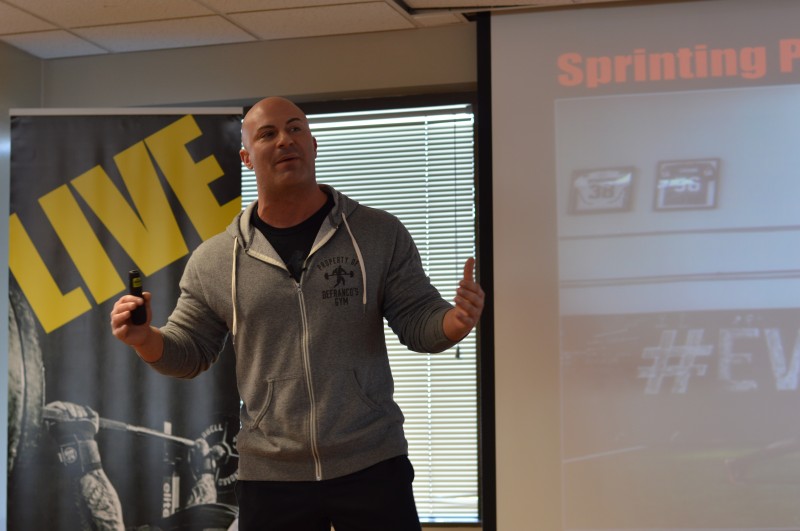
Moving away from general programming, Joe DeFranco is presenting this afternoon at the Sports Performance Training Summit on training for sprint speed.
DeFranco's presentation, "Sprinting Problems...Prowler Solutions" covers his own evolution of understanding the Prowler and the benefits it can offer speed and power athletes.
"Regardless of the energy system or event they're preparing for, the Prowler has always helped my athletes," DeFranco said in his presentation.
The Prowler's usefulness comes from it's applicability to short sprints.
THE 10 YARD SPRINT
According to DeFranco, the 10-yard sprint is important even outside of the NFL combine.
"Most team sports are played in acceleration with rapid change of direction," DeFranco said. "This starts with short sprints."
For this reason, DeFranco uses the 10-yard sprint as an indicator-exercise to evaluate athletic progress and speed.
This means that improving the 10-yard sprint should be a primary goal of an athlete's training program. DeFranco has a few technical considerations to keep in mind for building a better 10-yard sprint:
- Steep forward lean with positive shin angle
- Longer ground contact time
- Forward arm swing
You want to coach these things with athletes learning to sprint, but it doesn't have to be perfect," DeFranco noted. "In a game, an athlete will be dribbling a basketball or holding a football and things will change.
The best 10-yard sprinters complete the entire test in 6.5 or fewer steps. By this rule, sprinters of various speeds can evaluate sprint technique by number of steps.
"The fewer amount of steps you take, the quicker your time is going to be," DeFranco said. "Stride length truly reigns supreme."
The two components DeFranco says demonstrate speed, stride length and stride speed, are not equal amongst athletes of different ages.
"Young athletes seem to be faster with higher stride frequency," DeFranco said. "But for collegiate and professional athletes, long, powerful strides matter most."

IMPROVING STRIDE LENGTH
"Best bang for your buck, focus on stride length," DeFranco said.>He suggests several ways to do this:
- Improve strength (relative to body weight)
- Improve mobility in hip flexors, adductors, and pecs
- Improve technique
You need strength in your glutes and quads to drive strength into the ground, but flexibility in your hip flexors and adductors to not fight the movement."
THE PROWLER
DeFranco has a long list of reasons the prowler is helpful for teaching proper sprint mechanics.
"You can't push or drag a prowler without proper lean," he said. "You can't over stride, and you can focus directly on force application and shin angles."
Additionally, DeFranco claims the Prowler is helpful because it improves ground force production and mobility at specific joint angles. In a coach-athlete setting, the Prowler enables coaches to offer better cues and improve sprint issues that are difficult to overcome in full-effort sprinting.
The Prowler drastically increases an athletes ability to learn," DeFranco said. "It builds strength and sprint patterns that help athletes."








